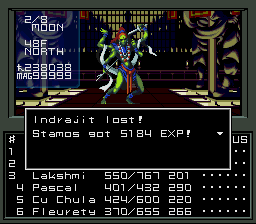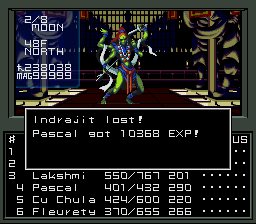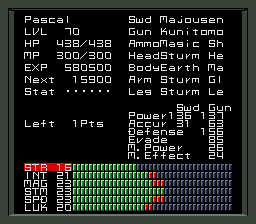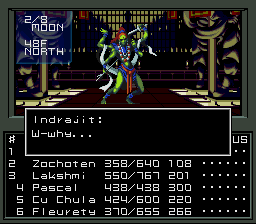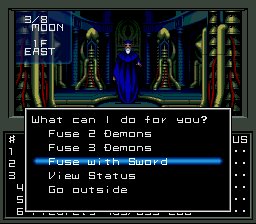


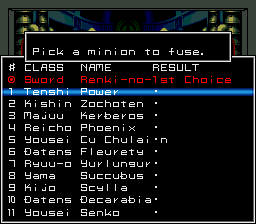
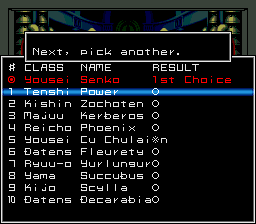
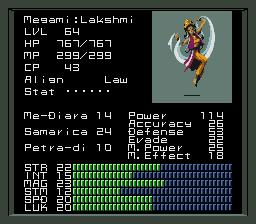
Let us check up on our friend the Octopus.Wikipedia posted:
Lakshmi or Mahalaxmi (Sanskrit: लक्ष्मी lakṣmī) is the Hindu goddess of wealth, light, wisdom, the lotus flower and fortune, and secondarily of luck, beauty, courage and fertility. Representations of Lakshmi (or Shri) are found in Jain and Buddhist monuments, in addition to Hindu temples. She is also kind to children and gives presents. Due to Her Motherly feelings and being the consort of Narayan (Supreme Being), She is believed as the Mother of the Universe.
She is the consort of Vishnu and married his incarnations Rama (in her incarnation as Sita), Krishna (as Rukmini) and Venkateshwara (as Alamelu). In Vaishnava traditions, She is believed to be the Mother Goddess and the Shakti of Narayan.
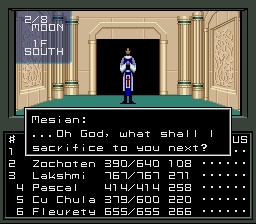
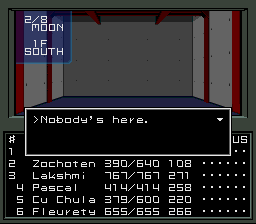

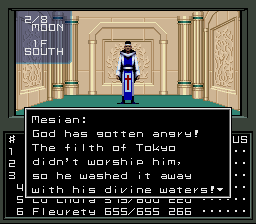


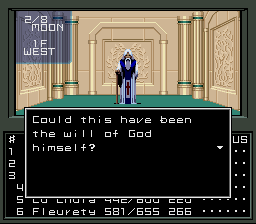
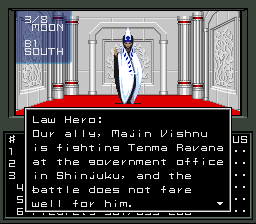
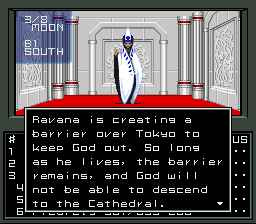
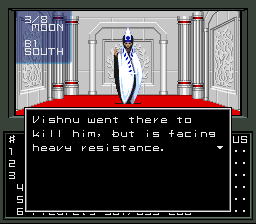
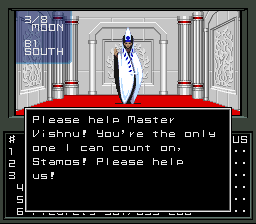
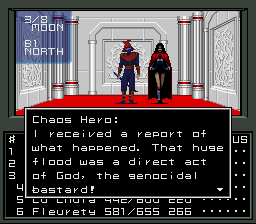
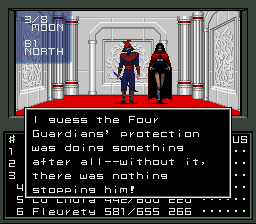


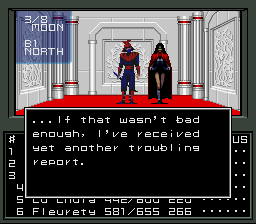
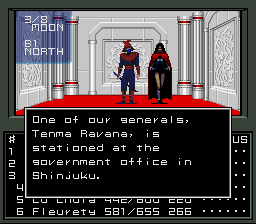
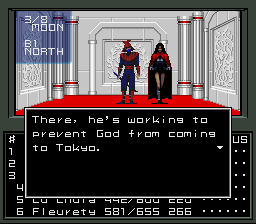
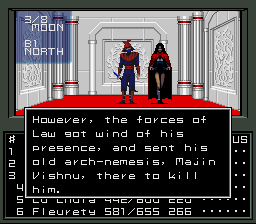
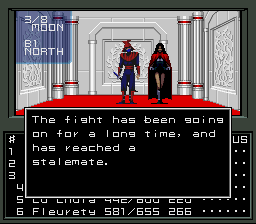
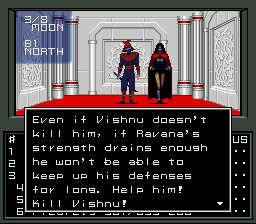
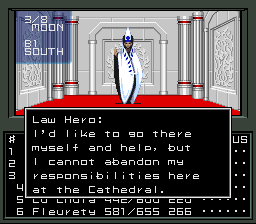
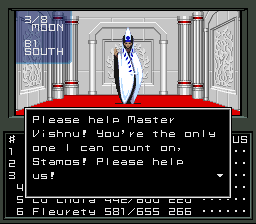
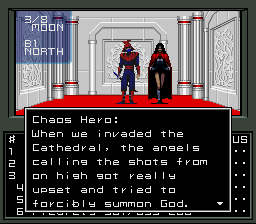

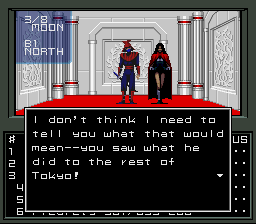
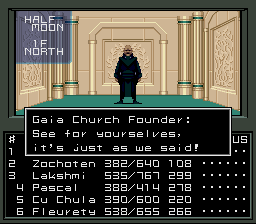
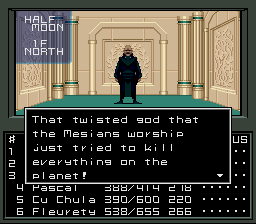
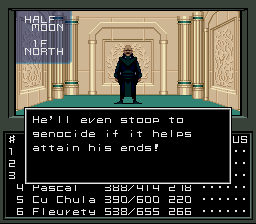
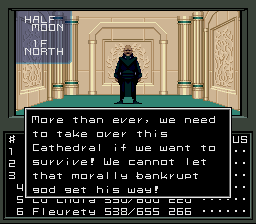

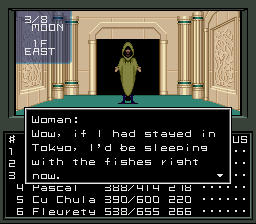
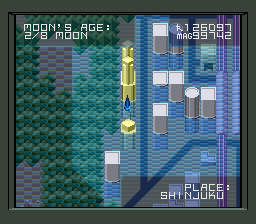
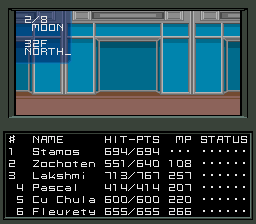
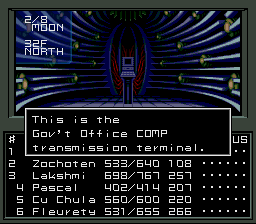
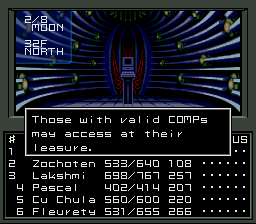


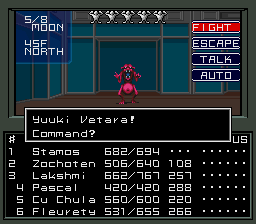
Wikipedia posted:
A vetala, or baital, is a vampire-like being from Hindu mythology.The vetala are defined as spirits inhabiting corpses. These corpses may be used as vehicles for movement (as they no longer decay while so inhabited), but a vetala may also leave the body at will.
In Hindu folklore, the vetala is an evil spirit who haunts cemeteries and takes demonic possession of corpses. They make their displeasure known by troubling humans. They can drive people mad, kill children and cause miscarriages but they also guard their villages.
They are hostile spirits of the dead trapped in the twilight zone between life and after-life. These creatures can be repelled by the chanting of holy mantras. One can free them from their ghostly existence by performing their funerary rites. Being spirits, unaffected by the laws of space and time, they have an uncanny knowledge about the past, present and future and a deep insight into human nature. Hence, many sorcerers seek to capture them and turn them into slaves.
A sorcerer once asked King Vikramaditya to capture a vetala who lived in a tree that stood in the middle of a crematorium. The only way to do that was by keeping silent.
However, every time Vikramaditya caught the vetala, the vetala would enchant the king with a story that would end with a question. No matter how hard he tried, Vikramaditya would not be able to resist answering the question. This would enable the vetala to escape and return to his tree. The stories of the vetala have been compiled in the book Baital Pachisi.
There is also a strong Vetala cult in the Konkan region, under the names of Betal, Vetal, etc. It seems, however, that the relation between the literary Vetala and this demigod's is feeble at best.
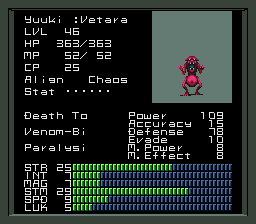
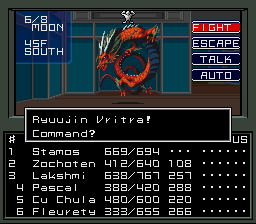
Refuses to talk to Stamos. Draconic asshat.Wikipedia posted:
In the early Vedic religion, Vritra (Sanskrit: वृत्र (Devanāgarī) or Vṛtra (IAST)) "the enveloper", was an Asura and also a serpent or dragon, the personification of drought and enemy of Indra. Vritra was also known in the Vedas as Ahi ("snake"), and he is said to have had three heads. The myth involving Vritra evolved over time as Indra's prominence at the head of the Pantheon faded and the Brahmins sought to glorify Vishnu.
According to the Rig Veda, Vritra kept the waters of the world captive until he was killed by Indra, who destroyed all the ninety-nine fortresses of Vritra (although the fortresses are sometimes attributed to Sambara) before liberating the imprisoned rivers. Since he killed Vritra, Indra was given the epithet Vritrahana (killer of Vritra). The combat began soon after Indra was born, and he had drunk a large volume of Soma at Tvashtri's house to empower him before facing Vritra. Tvashtri fashioned the thunderbolt (Vajrayudha) for Indra, and Vishnu, when asked to do so by Indra, made space for the battle by taking the three great strides for which he became famous.[1][2] Vritra broke Indra's two jaws during the battle, but was then thrown down by the latter and, in falling, crushed the fortresses that had already been shattered.[3] [4] For this feat, Indra became known as Vritrahan "slayer of Vritra" and also as "slayer of the first-born of dragons". Vritra's mother, Danu (who was also the mother of the Danava race of Asuras), was then attacked and defeated by Indra with his thunderbolt.[5] [6] In one of the versions of the story, three Asuras - Varuna, Soma and Agni - were coaxed by Indra into aiding him in the fight against Vritra whereas before they had been on the side of the demon (whom they called "Father").[7][8]
Some modern Indian geologists interpret the Vedic story as a description of the breakup of glaciers. B.P. Radhakrishna writes: "Geological record indicates that during Late Pleistocene glaciation, the waters of the Himalaya were frozen and that in place of rivers there were only glaciers, masses of solid ice. As and when the climate became warmer, the glaciers began to break up and the frozen water held by them surged forth in great floods, inundating the alluvial plains in front of the mountains.... no wonder the early inhabitants of the plains burst into song praising Lord Indra for breaking up the glaciers and releasing water which flowed out in seven mighty channels (Sapta Sindhu). The analogy of a slowly moving serpent (Ahi) for describing the Himalayan glacier is most appropriate".
In one verse of a Rig-Vedic hymn eulogising Sarasvati, the latter is credited with the slaying of Vritra. Mention of this occurs nowhere else. [9] [10]
If, however, the above interpretation by B.P. Radhakrishna and other geologists is correct, then the Rig-Veda's description of Sarasvati as taking the life-force of Vritra could be an analogy referring to the goddess being the personification of a river. In Vedic times, the Sarasvati was main river channeling the Himalayan melt-waters to the ocean.
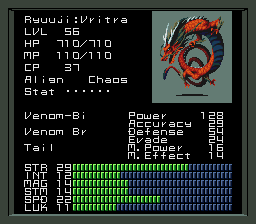
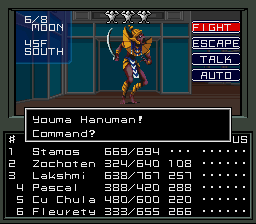
Wikipedia posted:
Hanuman (Sanskrit: हनुमत् Hanumat; nominative singular हनुमान् Hanumān), known also as 'Anjaneya', is one of the most important personalities in the Indian epic, the Ramayana. He is a vanara who aided Lord Rama (an avatar of Vishnu) in rescuing his wife, Sita from the Rakshasa king Ravana.
http://upload.wikimedia.org/wikiped...God_Hanuman.jpg
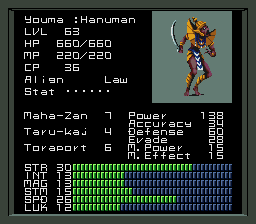
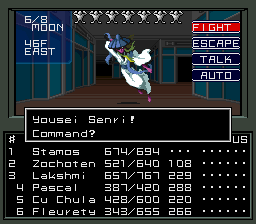
Megaten Wiki posted:
Based on Chinese animal spirts known as yao jing that would gain human forms after many years of training in Taoism.
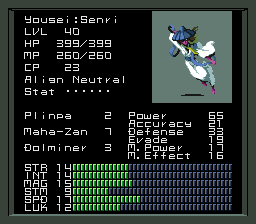
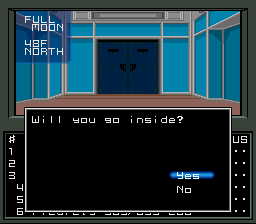
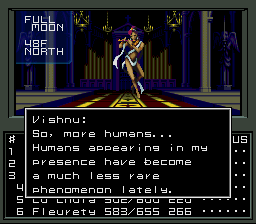
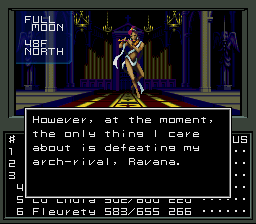
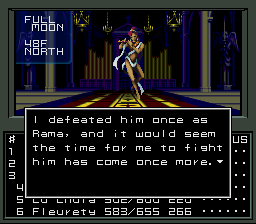
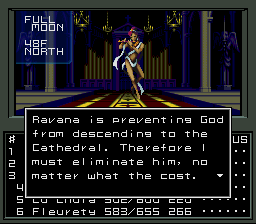
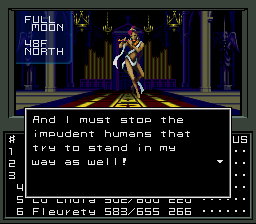
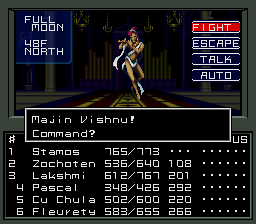
Well, he was very, very easy.Wikipedia posted:
Vishnu (IAST viṣṇu, Devanagari विष्णु), (honorific: Sri Vishnu) also known as Narayana is the Supreme Being or Ultimate Reality for Vaishnavas and a manifestation of Brahman in the Advaita or Smarta traditions of Hinduism.
The Vishnu Sahasranama[1] describes Vishnu as the All-Pervading essence of all beings, the master of and beyond the past, present and future, the creator and destroyer of all existences, one who supports, sustains and governs the Universe and originates and develops all elements within.
In the Puranas, Vishnu is described as being the colour of clouds (dark-blue), four-armed, holding a lotus, mace, conch and chakra (wheel). Vishnu is also described in the Bhagavad Gita as having a 'Cosmic Form' which is beyond the ordinary limits of human sense perception [2].
It is also within the Puranas that the information regarding Vishnu's avatars is given. Nine of these avatars, or 'incarnations' are described as having occurred in the past, with one still to happen at the end of Kali Yuga. The Bhagavad Gita mentions their purpose as being to rejuvenate Dharma[3] and vanquish negative forces.
In the Dvaita[4] Vaishnava traditions, Vishnu is the Supreme Being. Within the Advaita traditions, Vishnu is viewed as one of many 'forms' of the ultimately formless Brahman; however, Smarta adherents worship Vishnu as one of the five principal forms. In virtually all the Sanatana Dharma traditions, Vishnu is worshipped, either directly or through the Narasimha, Rama and Krishna avataras.
In the Trimurti, Vishnu is responsible for the maintenance or 'preservation' of the universe, with the other roles of creation and destruction being under the care of Brahma and Shiva, respectively.
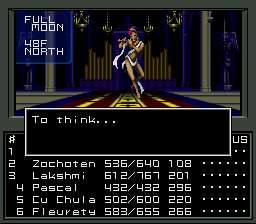
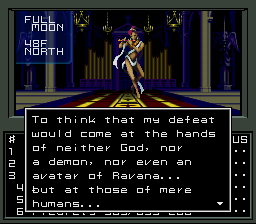
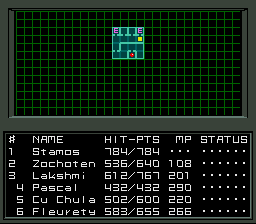
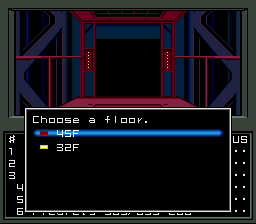
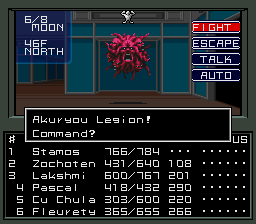
Wikipedia posted:
Legion, also known as the Gadarene demon, or translated as Lots, is a demon found in the Christian Bible in Mark 5:9 and Luke 8:30. A parallel version of the story can be found in Matthew 8:28-34, but this version does not contain the name "Legion" and tells of two men, not just one, possessed by a multitude of demons. In the story, Jesus travelled to "the country of the Gadarenes" ("Gerasenes" in Mark and Luke) and met a man possessed by an evil spirit, which spoke to Jesus in a conversation. The most commonly quoted version is found in Mark 5:9:
And he asked him, What is thy name? And he answered, saying, My name is Legion: for we are many. (KJV)
Another version of the quote is in Luke 8:30:
And Jesus asked him, saying, What is thy name? And he said, Legion: because many devils were entered into him. (KJV)
The demons that composed Legion were aware of the tremendous power of Jesus, and begged to be spared from being tossed back into the bottomless pit of hell (none of the words translated hell in the Bible are used, those being sheol, Gehenna, Haides, tartaros; rather, in Mark 5:10, the Greek word choras is used, translated "country" but more accurately meaning an empty expanse, and in Luke 8:31, the word abyssos is used, meaning a bottomless depth). Jesus instead cast the demons out of the man and, granting their request, allowed them to dwell in a herd of pigs. The pigs then drowned themselves in the Sea of Galilee.
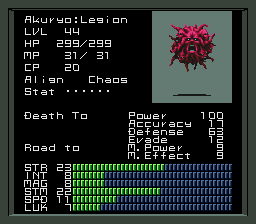

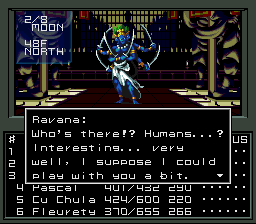
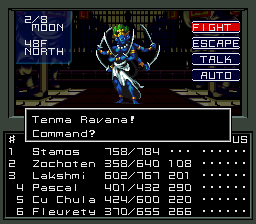
easy as pie as wellWikipedia posted:
In Hinduism, Ravana (Devanagari: रावण, IAST Rāvaṇa; sometimes transliterated Raavana and as Ravan or Revana) is the principal antagonist of the Hindu epic, the Ramayana. In the epic, he was a king of Lanka many thousands of years ago.
Ravana is depicted in art with up to ten heads, signifying that he had knowledge spanning all the ten directions. His ten heads earned him the names "Dasamukha" (The ten-faced), "Dasagriva" (The ten-headed) and "Dasakanta" (Ten Throats). He also had twenty hands, signifying his great warpower and the ability of using various weapons. He was indeed a great warrior. He is still revered by Sri Lankans as an icon of their independence from India.

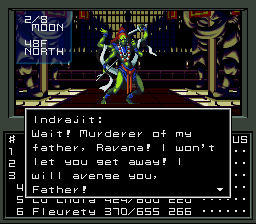
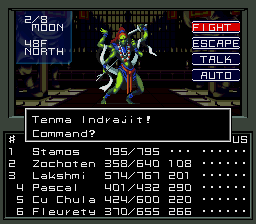
Wikipedia posted:
From the Hindu epic Ramayana, Indrajit (pronounced indrajīt) (Sanskrit: इन्द्र जीत) also called Meghanaada (méghanāda) was the son of Raavana, king of Lanka by his wife Mandodari, daughter of Mayasura. A foremost warrior he could rival Rama in fighting skills. He was an ideal son and citizen
Indrajit was named "Meghanad" at birth because when he cried for the first time, thunder and lightning resounded, signifying the birth of a great warrior. The sobriquet 'Indrajit' ("conqueror of Indra") was conferred upon him by Lord Brahma when he defeated and imprisoned Indra, the king of the Devas. A Brahmastra weapon was granted to Indrajit on this occasion. It is said that this weapon has tremendous power and when it leaves the bow, it can beat any arrow and kill any person at wish.
Indrajit played an active part in the great war between Rama and Ravana. Indrajit even bound Rama and Lakshmana under the Nagpash (Serpent spell). King of eagles Garuda subsequently freed Rama and Lakshmana from the Nagpash. Indrajit was unbeatable in war due to the yajna (also spelled yagna) he carried out before any battle, and could only be killed by disrupting this yajna. Lakshmana disrupted his yajna and killed Indrajit while he was in meditation. Thus slaying him by treachery. .
Indrajit was married to Sulochana (Prameela), daughter of Adishesha, who is viewed by some sects as having been an incarnation of Lakshmana. Thus, in some way, Indrajit may be regarded as Lakshmana's son-in-law. Prameela hailed from the nagas.
